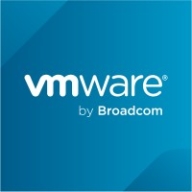

VMware Cloud Director and CloudBolt are competitive products in the cloud management arena. CloudBolt seems to have the upper hand due to its intuitive multi-cloud management solutions and flexibility, which appeal to organizations seeking automation capabilities.
Features: VMware Cloud Director offers robust virtualization management tools, integration with existing VMware infrastructures, and efficient resource allocation. CloudBolt emphasizes its orchestration capabilities, customizable automation workflows, and easy integration with multiple cloud providers.
Room for Improvement: VMware Cloud Director could enhance multi-cloud support, improve cost management features, and streamline its user interface. CloudBolt could focus on improving scalability, enhancing its security features, and expanding its automation tools to handle more complex workflows.
Ease of Deployment and Customer Service: VMware Cloud Director is designed for environments familiar with VMware, offering comprehensive onboarding, but may involve longer setup times. CloudBolt boasts an agile deployment model with a user-friendly interface and strong customer support, facilitating quicker adaptation to changing business needs.
Pricing and ROI: VMware Cloud Director requires higher initial setup costs, providing high ROI for enterprises invested in VMware. CloudBolt offers lower setup costs and efficient cost management, delivering attractive ROI by managing cloud expenses effectively.
Most of the time, we have to raise the case with the vendors such as HPE or other providers, but in case of VMware Cloud Director or any other VMware product, 70-80% of problems we can easily troubleshoot by leveraging public documentation and the available KB articles.
VMware Cloud Director is quite scalable; I would rate it nine out of ten.
I would rate scalability for VMware Cloud Director as 8, especially from the on-premises environment.
There are occasional problems when trying to increase the parameters of a virtual machine.
Cross-cloud migration refers to if a customer has something on Azure, wanting to bring it up on VMware or maybe from VMware to AWS, vice versa.
The console methods make management difficult until VMware tools are installed.
The pricing for VMware Cloud Director is more or less reasonable, especially when compared to Cisco, which is significantly more expensive.
From a pricing perspective, I would rate VMware Cloud Director as 7 because being the available feature set, Broadcom always offered more price compared to another product.
The most valuable feature of VMware Cloud Director is segregating the underlying infrastructure for the end user.
A notable feature is the Independent Disk, which allows detaching a virtual drive from one virtual machine and attaching it to another, enabling more flexibility in operations.
| Product | Market Share (%) |
|---|---|
| VMware Cloud Director | 5.4% |
| CloudBolt | 2.5% |
| Other | 92.1% |


| Company Size | Count |
|---|---|
| Small Business | 3 |
| Midsize Enterprise | 1 |
| Large Enterprise | 6 |
| Company Size | Count |
|---|---|
| Small Business | 24 |
| Midsize Enterprise | 11 |
| Large Enterprise | 36 |
CloudBolt supports a variety of cloud technologies, from on-premises virtualization and private cloud to a wide range public and hybrid cloud configurations.
No need to rip-and-replace. CloudBolt provides easy import, syncing, and management of legacy deployments even as it helps you build out new cloud environments.
CloudBolt lets administrators create and maintain configuration standards while developing a reusable library of service and application templates.
VMware Cloud Director, also known as vCloud Director, is a cloud management tool that offers secure, flexible, and efficient cloud resources to thousands of enterprises and IT teams across the world. The solution serves as one of the leading cloud service-delivery platforms for businesses that want to manage and operate their services effectively. By deploying this solution, companies can benefit from virtualized networking, computing, security, and storage. These benefits can be received in a timely manner, as the infrastructure of the product is operationally ready within minutes and clients do not need to install and configure physical infrastructure.
One of the biggest advantages of vCloud Director is that it allows users to build cloud-ready applications. In several ways, it facilitates the process for developers, including:
vCloud Director Features
This VMware product has various features through which users can virtualize their data and benefit from quality management solutions. Among the popular capabilities of vCloud Director are:
vCloud Director Benefits
VMware vCloud Director offers various benefits to its users. Some of these include:
Reviews from Real Users
Ajit Y., a cloud architect at a computer software company, likes VMware vCloud Director because it is a stable, truly multitenant software and the go-to tool for infrastructure as a service.
Kashif F., a divisional engineer at National Telecom Corporatio, rates vCloud Director highly because the product can be used for infrastructure provisioning without using a platform service.
We monitor all Cloud Management reviews to prevent fraudulent reviews and keep review quality high. We do not post reviews by company employees or direct competitors. We validate each review for authenticity via cross-reference with LinkedIn, and personal follow-up with the reviewer when necessary.